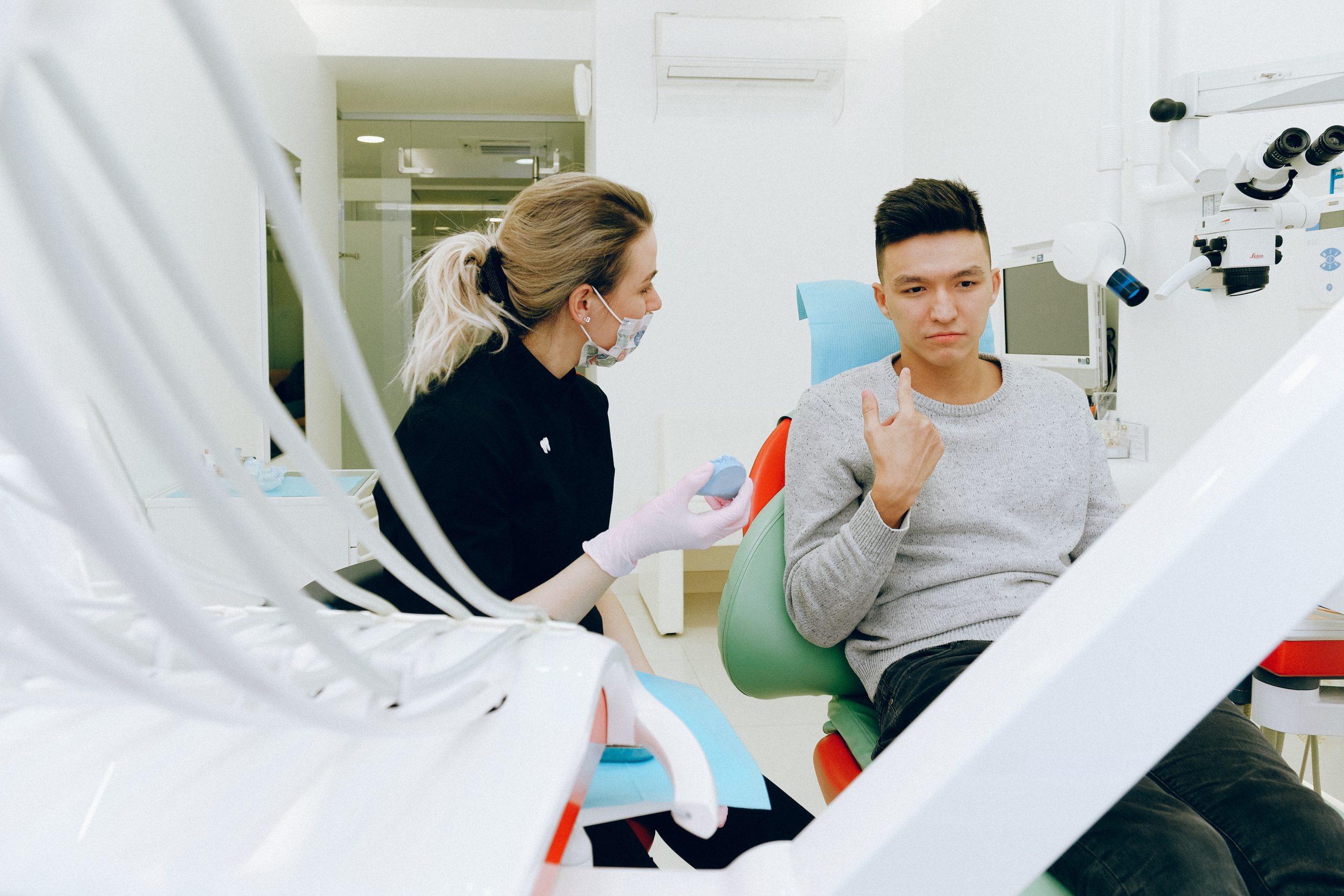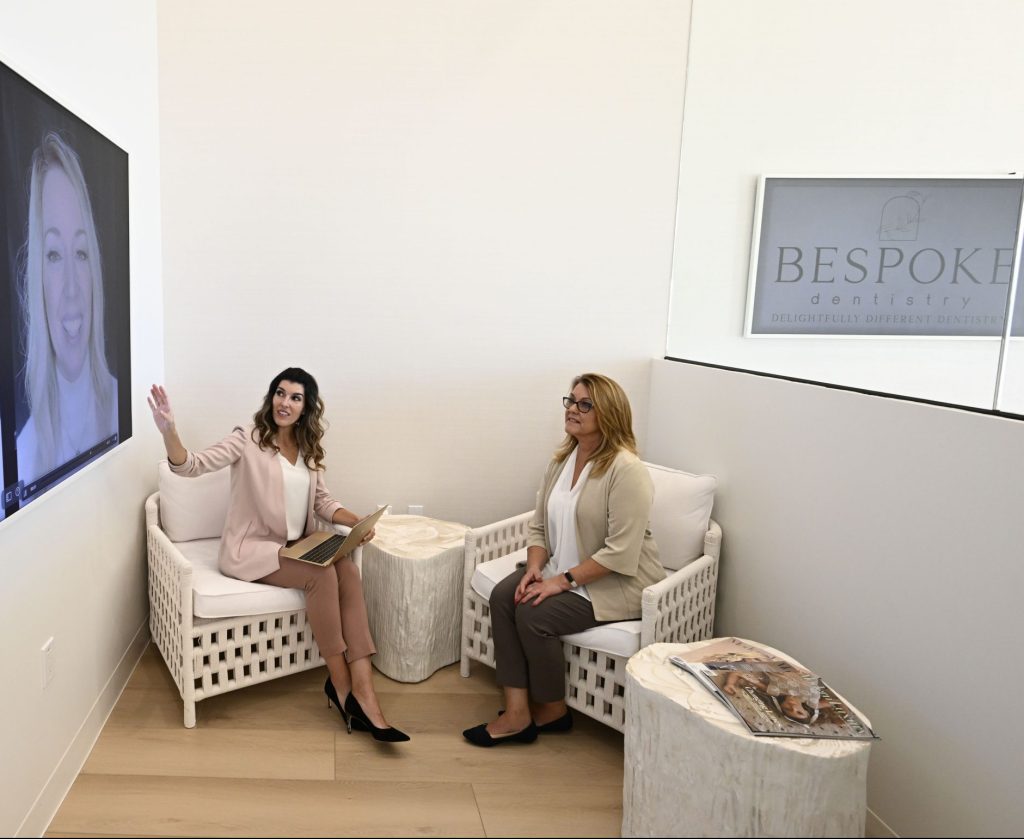
04 Apr Reducing Patient Dental Anxiety
Unlike other fears like spiders, flying, or public speaking, dentophobia, or fear of going to the dentist, is a much broader anxiety. It encompasses the entire practice, not just one part like a drill or taking an x-ray. And, for good overall health, going to the dentist is practically unavoidable. For dentists, this can be a huge mountain to climb in treating dental-fearing patients and treatment acceptance. If a visit is avoided for too long, a patient can suffer from oral health complications that require more advanced treatment, ultimately leaving the patient more fearful than the original hygiene appointment. There are various aspects of dental design to consider when combating patient fear. Here are some methods to hopefully make the previously anxiety-inducing appointment actually enjoyable.
First Impressions
The reception and waiting area is a patient’s first introduction to the office and is crucial to the patient experience. Providing the patient, a clear and distinct path to key areas like check-in, waiting, and the clinical transition creates clear expectations for processes.
A quick and easy check-in process can work wonders on a variety of fears such as dental, health, social, and time anxiety. An e-check-in kiosk or online check-in prior to the appointment can alleviate some of the building fear that occurs when filling out medical paperwork on a time crunch. Being able to “work in advance” allows the individual to regulate their emotions about the actual appointment rather than the paperwork. Also, providing an independent option rather than person-to-person gives the patient an enhanced sense of control over their environment. Choice is power. Alternatively, for practice management, online check-in and out processes lessen staff workload.

Influence through Environment
Soft seating and layered lighting more like a hotel or living room ease the clinical feel. Consider adding ambient sound or sound-dampening materials to muffle any treatment sounds or chatter throughout the practice.
Next, consider the color scheme. While bold, bright accents can be exciting, striking a balance of color and neutral bases that will emphasize your brand while appealing to a broad range of guests is ideal for adjusting to trends. Take a second and imagine entering an office with a dark red and black color scheme- you most likely would not feel calm. Among many other things, we utilize color to transmit mood, enhance meaning, and help us make sense of the world. It is natural to associate a specific meaning or feeling with a color, so weaving a palette of accents and neutrals will prevent your patients from turning around as soon as they walk through the door. If you want to learn more about common color-to-mood correlations, check out our Color Associations blog here.
Consultation Options
Offering a variety of consultation options promotes efficiency and flexibility for both the patient and staff. Moving from one room to another can build a serious tone for treatment conversations, while others find sitting in the treatment chair for consultation can be a vulnerable position.
If conducting consultation in treatment, consider adding in more robust seating than a small guest chair. Create a comfortable spot for a patient to leave the treatment chair and sit face-to-face to discuss treatment options.
If you do decide to utilize a dedicated consultation office, consider how the seating will be positioned. Often, some anxiety comes from the seriousness of an executive-style desk. You can adjust the seating to make the environment seem more casual or conversational. Equally-positioned lounge seating and a large screen to project treatment planning and scans can enhance the patient’s feeling of solidarity in deciding how to move forward rather than being talked down to by a person of authority.
For an even more casual conversation, moving the patient to a standing consultation station empties the room for turnover, while any follow-up care or appointments can be discussed off the hall in a small alcove.

Familiar Comforts
Much of dental anxiety comes from the possibility of pain. While you can’t always prevent this, you can control the comforts and amenities of the treatment room to make the most of the patient’s experience. Dental chairs or massage mats can create a spa-like experience in the chair, while a soft throw blanket is a nice touch to again alleviate the feeling of a cold, clinical environment. Give the patients the option to watch their favorite TV show or movie on a ceiling-mounted television. This can drastically divert the patient’s attention away from impending treatment or pain. Headphones for music or even VR headsets for visual and auditory stimulation can be a step above typical amenities.

Dental health is crucial to maintaining overall wellness. Creating an environment that allows the patient to be as comfortable as possible is key to consistent appointments and treatment acceptance.
For more inspiration on creating welcoming environments, check out our design portfolio and the Henry Schein Dental YouTube page for playlists on office Grand Openings and featured practices.
